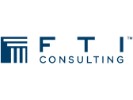Crisis Management 2025
USA – Washington, DC
Trends and Developments
Mitigating the Impact of a Crisis
Opening scenario
At around 9pm on a weeknight, a senior executive at a mid-cap company received an alert on his iPhone. A news story referencing his company had just been published, and his iPhone alerted him anytime the company was mentioned in the media. Often, an alert by itself might not draw any special attention. It was a common occurrence, after all, to be mentioned in trade media. But this headline was different. And he understood that immediately.
The article, published by a highly credible news outlet, detailed serious allegations of misconduct throughout this corner of the company’s industry. There were claims of bribery, kickbacks and connections to organised crime. The central focus of the article was a handful of companies with overseas operations. But his company was the only US-based entity mentioned by name.
While the reporter had carefully couched everything as “allegations” and not “facts,” the clear takeaway was that all of the companies mentioned were connected to potentially unlawful activity.
The article would soon reverberate across the industry and would pose an existential threat because the company relied on ongoing access to financing, good relationships with foreign and domestic governments, and the continued trust of various critical business partners. As a result of this story, those relationships would be strained.
As he read line after concerning line, texts from colleagues started to come in, raising the internal alarm about the story. Soon, a calendar invite arrived for an executive leadership team call at 10pm. It mentioned that additional media outlets were inquiring about the allegations. The crisis was just starting. The situation was evolving fast.
The initial news alert was just the beginning of a negative news cycle and, with no current plan to immediately mitigate the damage, the media coverage was likely to get worse.
Less than a day later, as the crisis mounted, it became clear the impact could have been avoided or at least mitigated. It turns out that a month earlier, the company’s outside communications team had flagged a media inquiry from this news outlet. However, it was the company’s customary policy to avoid commenting in mainstream or business press. Afterall, the company believed, there was often very little upside to engaging with media outside of the trade publications with which it had longstanding relationships. So, while the inquiry was flagged, the decision was made at the time to not return the reporter’s call.
Additionally, a review of social media chatter in the months leading up to the article would have identified an escalating series of rumours and innuendo, all with negative themes that were ultimately captured in the initial news report. And, a review of traditional media a year earlier would have revealed that a newly elected government official in a foreign country made comments critical of the industry. While local press covered the comments, they were not picked up in international media. Yet, this commentary was easily found through a simple Google search.
Blind to these warning signs, there was no appreciation for how bad the situation could get or how quickly it could spiral out of control once a story appeared.
Importance of speed
In today’s media environment, a negative story – whether true or false – can make its way into newsrooms and inboxes before the subject of the news story is able to process what happened. Traders buy or sell, judgements are made, reputations are won or lost – all before any sober assessment of what happened can be made, and well before a company can organise an executive leadership call.
Figuring out the actual allegations is usually the first step in gaining control of a situation. Had the company engaged with the reporter weeks earlier, even if only on background, it could have learned more about what it was dealing with. The company would not have needed to provide a comment or reveal any information to the reporter at the time. It could have simply asked the reporter questions about the story to better understand what the accusations entailed and when the alleged wrongdoing reportedly occurred, among other critical details.
To ensure accuracy, most reputable reporters gladly lay out many of the facts that they expect will appear in their articles and give the company a chance to respond. Indeed, many well-sourced reporters understand that their inquiry to a company may be the first time that most of its executives are hearing of the alleged wrongdoing.
While every crisis is different and needs to be handled fittingly – whether a factory fire, financial irregularities, or inappropriate conduct by an executive – a company that has time to assess the situation before the crisis becomes public is in a far better position, strategically. The time between discovery and public disclosure provides an opportunity for the company to take the right actions – develop a statement, prepare communications for the relevant audiences, identify potential third-party validators, and shape the overarching message. Most importantly, it gives the company time to consider the substantive reforms it should implement so it has a better, more responsive message to convey.
Time in your favour: when a crisis is not immediately disclosed publicly
With most allegations of serious wrongdoing, a responsible company will hire outside counsel to launch an investigation to determine whether the misconduct in fact occurred, who was involved, what policies may have incentivised the wrongdoing, and how widespread it may be. The company, with outside legal counsel input, may even decide to voluntarily disclose the situation to its regulators.
Early on, there may be little a company can say, but even acknowledging that it has launched an investigation is significant. The very act of conducting the investigation demonstrates that the company is taking the matter seriously and is committed to finding out what happened. It sends a subtle message that the conduct does not reflect the values of the company, and the company plans to get to the bottom of it. It also gives the company the ability to legitimately shut down most inquiries because it, too, is trying to understand what happened. It telegraphs that management has questions and is demanding answers.
At the same time, the period during which the investigation is underway allows the company the chance to reassess its policies and take steps that will demonstrate the company is a responsible corporate citizen. Working with outside legal counsel, the crisis communications team can inquire as to whether certain policies may have inadvertently enabled the wrongdoing, warranting a change in those policies. Outside counsel can also determine whether there may be a need for corrective action against those individuals involved, changes in reporting structure, additional employee trainings, enhanced compliance programmes and/or reporting resources, such as a confidential hotline.
These possible reforms may not only benefit the legal strategy and address the underlying issue; they can shape a narrative that appropriately portrays the company in a positive light. If there is ultimately a criminal or civil settlement with a government agency, the company’s statements can be forward looking, focusing on the relevant reforms that have been implemented or are underway.
In short, good crisis communications relies on good crisis management – as they go hand-in-hand. Rather than gearing up to merely defend the alleged wrongdoing, the company should prepare to focus its messaging on the new reforms and its prospects for the future.
The value of crisis preparation when the crisis hits without warning
In many crises, a company has no advance warning, learning of the situation at the same time as the public. While that means the company may not have much time to organise a response, it does not mean the company should not be prepared with a plan to respond.
Today, many management teams develop crisis preparedness plans and rehearse how they would react to a given scenario through tabletop exercises. It is not practical to develop plans for every possible event, but an overarching crisis management plan with the company’s pertinent protocols and procedures can be incredibly useful, especially when they are put in practice during an exercise. Even if an actual crisis is different from a rehearsed scenario, these exercises help senior leaders develop the appropriate muscle memory to follow the company’s escalation protocols, crisis response structure, and dedicated roles and responsibilities.
The tabletop session also helps ensure that all leaders and external advisors are on the same page about who should be involved in the company’s crisis response efforts, respective responsibilities, decision-making processes and how information is shared between teams across the company throughout the crisis.
In many such exercises, senior leaders learn for the first time how much actually takes place within their own organisation during a crisis. They discover that the investor relations team fields many calls from their top investors demanding answers and that reporters ask often unanswerable questions of the company’s spokespeople. They quickly appreciate that the sales force, which may be bombarded with questions from customers affected or unaffected by the event, needs to be equipped with responses. And they come to appreciate that mid-level management need guidance on how to engage with anxious employees who may fear for their jobs, safety or the company’s future.
During these tabletop exercises, a company’s senior leaders have an honest conversation about how bad things could get. While the worst-case scenario may not happen, management learns to be aware of what is possible and prepare to respond accordingly.
Managing risk before, during and after a crisis
The risks associated with crises are copious. Leaders of any company would be wise to assess and plan for those risks before a crisis occurs – be they commercial risks, regulatory risks, legal risks or reputational risks.
For instance, one member of the executive team may be most concerned by a potentially large jury award, while others may harbour concerns about a regulator calling, boycotts, protests, investor flight or the severing of contracts. While a jury award, regulatory penalty or fine could be easily paid in a day, executives need to weigh the reputational damage that the company could be paying for years to come.
It may also be necessary to implement an early warning monitoring system to identify and flag risks that may seem remote but are worth keeping an eye on. Sort of like when NASA flags a meteor that has 1% chance of making contact with Earth. It is remote, but certainly something to monitor.
Such a risk assessment helps to focus the company’s attention. But it requires more than understanding the business and speaking to those in leadership. It also requires listening to voices from outside the company who may have a perspective the executive team does not.
What are the risks that consumers, suppliers or local residents fear most? For some, it could be a plant explosion or a factory closure. For others, it could be a product recall or financial impropriety. Companies therefore need to evaluate and manage their relationships with a host of stakeholders, including business partners, investors, employees, members of Congress, local elected officials and other relevant audiences. Determining who the company should prioritise communicating with in a crisis, and how, is critical.
Starting with the most vital and relevant relationships, companies should assess how those relationships may be impacted by a crisis and how they can be preserved. If a key partner in the supply chain could lose sales as a result, that relationship may be vulnerable. Such relationships, and how they are safeguarded amid a crisis, therefore, become part of the company’s risk assessment.
When the risks and the stakes are known, companies can tailor a well-informed plan before a crisis hits.
Advance awareness of these risks provides an opportunity to focus on key relationships and improve practices before they come to light. This can include reshaping the company’s owned content on its website and social channels to build the confidence of partners and customers. It may include building and nurturing relationships with key media outlets, so they understand the company’s mission before a negative news event. It could also include establishing a dialogue with local elected officials and political figures, so they appreciate the role the company plays in the community or a given industry.
Most critically, it should identify the other third-party organisations and relationships that could influence those stakeholders. Direct engagement is one thing. What is often missed is creating an environment that organically reinforces a company’s messages through third-party voices. Companies that take advantage of the quiet moments to thoughtfully strengthen these relationships have a clear advantage.
Knowing its vulnerabilities, a company can make improvements that might circumvent a crisis before it unfolds or at least prepare the company to know where the issue may come from, allowing for a quicker, more thoughtful response that safeguards its reputation.
Negative news coverage is always a possibility, but a clear, disciplined and ongoing risk assessment and crisis management programme will limit the likelihood that a company will be completely surprised or unprepared to respond when it matters most.
FTI Consulting, Inc.
555 12th St NW, Suite 700
Washington
DC 20004
USA
+1 202 302 5832
+1 202 312 9101
myron.marlin@fticonsulting.com www.fticonsulting.com




